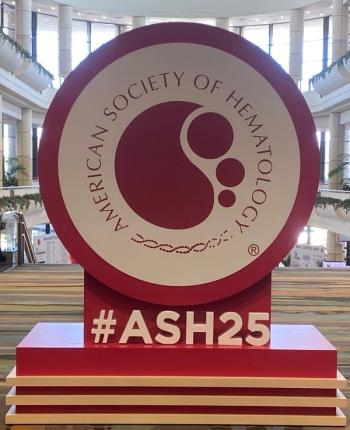
NACT Use Appears to Be Increasing in Less Common Epithelial Ovarian Cancers
Patients with low-grade serous ovarian cancer appear to have worse survival outcomes following treatment with neoadjuvant chemotherapy (NACT).
A version of this article was originally published by
The use of neoadjuvant chemotherapy (NACT) for less common epithelial
Outcomes were assessed in patient cohorts from the National Cancer Database (NCDB) and the Surveillance, Epidemiology, and End Results (SEER) program.
In the NCDB cohort, from 2006 to 2017, the use of NACT underwent relative increases of 58.8% in clear cell carcinomas, from 10.2% to 16.2% (P < .001); 84.4% in low-grade serous carcinomas, from 7.7% to 14.2% (P = .007); and 61.6% in mucinous carcinomas, from 8.6% to 13.9% (P = .07). The interval increase in usage was especially high in older patients with low-grade serous or mucinous carcinomas, younger patients with clear cell carcinomas, patients with minimal comorbidity and clear cell and low-grade serous carcinomas, patients with stage III clear cell carcinomas, and patients with stage IV low-grade serous or mucinous carcinomas.
Patients with clear cell carcinomas had 4-year overall survival (OS) rates of 31.4% with NACT vs 37.7% with PDS (HR, 1.12; 95% CI, 0.95-1.33). The corresponding figures among those with mucinous carcinomas were 27.0% vs 26.7%, respectively (HR, 0.90; 95% CI, 0.68-1.19). Patients with low-grade serous carcinomas receiving NACT had a 4-year OS rate of 56.4% vs 81.0% with PDS (HR, 2.12; 95% CI, 1.55-2.90).
Increases in NACT use also occurred in the SEER cohort among patients treated from 2006 to 2019. The relative increases in the use of NACT were 159% in clear cell carcinomas, from 10.2% to 26.1% (P <. 001), and 147% in low-grade serous carcinomas, from 6.2% to 15.3% (P = .04). The relative increase was 52.1% in mucinous carcinomas (P = .20).
Comparable OS was attained using both NACT and PDS for patients with both clear cell (HR, 0.93; 95% CI, 0.74-1.16) and mucinous (HR, 1.13; 95% CI, 0.72-1.78) carcinomas in the SEER cohort. Additionally, NACT yielded worse OS outcomes than PDS among patients with low-grade serous carcinomas (HR, 3.17; 95% CI, 1.57-6.40).
“A one-size-fits-all concept may not apply in ovarian cancer treatment due to the heterogeneity of the tumors in clinical and biological characteristics; thus, thoughtful interpretation is warranted when extrapolating data derived from common subtypes to less common histologic subtypes,” the authors wrote. “Given a growing enthusiasm for NACT use in less common ovarian carcinomas, developing clinical practice guidelines and consensus to address the role of NACT in less common histologic subtypes would be useful.”
The NCDB cohort included 3880 patients. Of this population, 1829 had clear cell disease, 1156 had low-grade serous disease, and 895 had mucinous disease. The median (IQR) patient age in each respective group was 56 (49-63), 53 (42-64), and 57 (48-66) years. In total, NACT was administered to 13.8%, 10.4%, and 10.6% of patients.
The SEER cohort included 1447 patients, of whom 745, 369, and 333 had clear cell, low-grade serous, and mucinous disease, respectively.
The sequence of treatments was either PDS followed by postoperative chemotherapy or primary chemotherapy followed by interval surgery. The primary end points were trends in and characteristics of NACT use, as well as OS.
Potential limitations to these findings include a variety of unmeasured cofounders such as tumor burden and details of patient comorbidities, as well as various possible selection biases, according to the investigators. Moreover, the investigators only assessed patients from the United States.
“While necessary to address the unmet needs of evidence, prospective trials to evaluate the effectiveness of NACT in less common ovarian cancer subtypes would be likely challenging to conduct due to their rare incidence. National and international collaborations could facilitate the development of such trials,” the investigators concluded. “Barring more data, careful patient selection and shared decision-making are recommended when NACT is considered in these less common carcinomas.”
Reference
Matsuo K, Matsuzaki S, Maeda M, et al. Uptake and outcomes of neoadjuvant chemotherapy among US patients with less common epithelial ovarian carcinomas. JAMA Netw Open. 2023;6(6):e2318602. doi:10.1001/jamanetworkopen.2023.18602
Newsletter
Stay ahead of policy, cost, and value—subscribe to AJMC for expert insights at the intersection of clinical care and health economics.













































